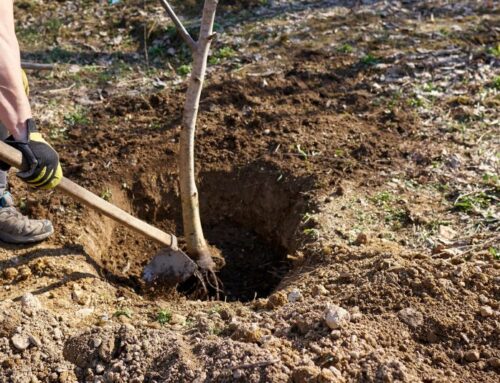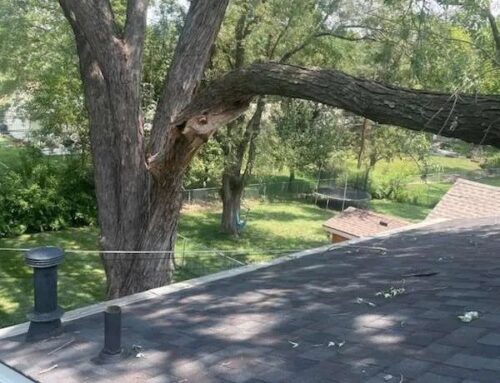Trees are valuable components in our landscapes, giving us beauty, shade, wildlife habitat, and much more. But like any living thing, trees can develop structural issues over time from severe weather events, age, or improper growth. Some ways to support structurally weak trees is cabling or bracing. These techniques use flexible steel cables or solid braces to provide extra support and reduce the risk of tree failure. But what exactly is tree cabling or bracing, when is it necessary, and how does it work?
What is Cabling and Bracing a Tree?
Tree cabling and bracing are techniques used to reinforce and support trees with structural weaknesses. Cabling involves the installation of steel cables between major limbs or the tree trunk to limit the movement of limbs, thus reducing the risk of breakage. Bracing, on the other hand, involves the insertion of steel rods through weak branches or trunks to provide rigid support.
These methods are used to:
- Prevent limb failure: By limiting the movement of branches during storms or high winds, cabling and bracing help prevent limbs from breaking off.
- Support weak structures: Trees with multiple trunks or narrow, V-shaped unions often need additional support to prevent splitting.
- Extend tree life: By addressing structural weaknesses, cabling and bracing can prolong the life of a tree that might otherwise fail.

When is Tree Cabling Necessary?
Tree cabling can help when a tree has structural weaknesses that threaten its stability and health. Some common scenarios where cabling might be required include:
- Weak branch unions: Some trees naturally develop weak unions where branches join the trunk. This can lead to a higher risk of splitting.
- Excessive movement: If large branches or tree trunks sway excessively during windy conditions, cabling can help stabilize them.
- Overextended limbs: Branches that extend far from the trunk without adequate support can be prone to breaking.
- Historical significance or sentimental value: For trees that hold significant value, cabling can help preserve them for longer periods.
Arborist consulting can help you identify these conditions and decide if cabling is needed to minimize potential risks.
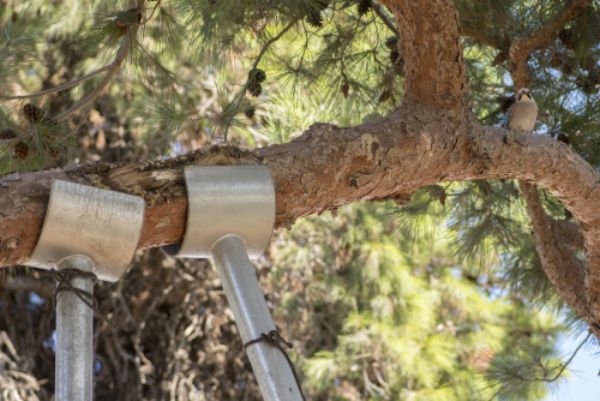
How Long Does Tree Cabling Last
The lifespan of tree cabling depends on the materials used, environmental conditions, and the growth rate of the tree. Generally, tree cables can last anywhere from 10 to 20 years. However, remember to get regular inspections by a professional arborist to ensure the integrity of the cabling system.
During these inspections, arborists check for:
- Cable wear and tear: Over time, cables can degrade due to weather conditions, corrosion, or friction against the tree.
- Tree growth: As the tree grows, it may outgrow the cabling system, requiring adjustments or replacements.
- Structural changes: The tree’s condition may change, requiring new or additional support.
To ensure the continued effectiveness of the cabling system, it’s recommended to have the tree inspected every 3 to 5 years.
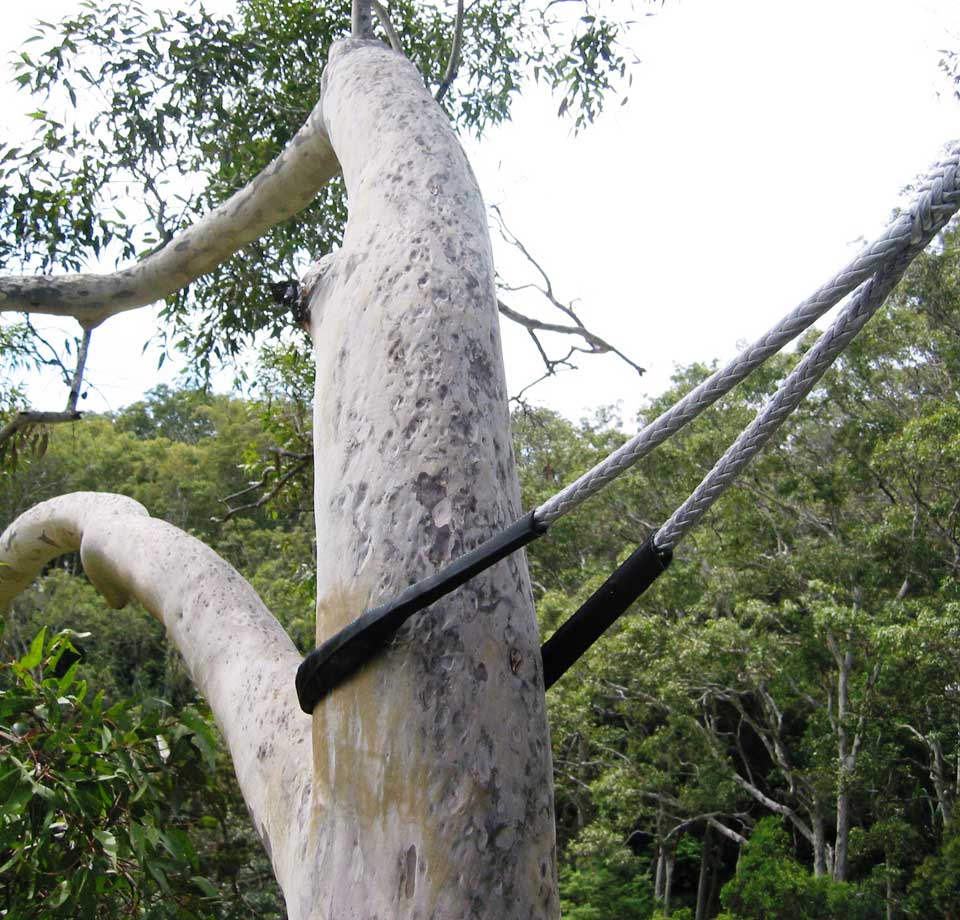
Tree Cabling Benefits
Tree cabling offers numerous benefits that improve the health, safety, and lifespan of trees:
- Improved safety: By reducing the risk of limb or trunk failure, cabling minimizes the potential hazards to people, property, and other trees.
- Extended tree life: Supporting weak structures helps trees grow for longer, contributing to the ecosystem and property value.
- Enhanced stability: Trees are better equipped to withstand severe weather conditions when structurally reinforced.
- Preservation of historic or valuable trees: Cabling can help maintain the integrity of trees that hold historical, sentimental, or ecological value.
- Cost-effective: Addressing structural issues through cabling can be more cost-effective than removing a large, mature tree and replacing it with a new one.
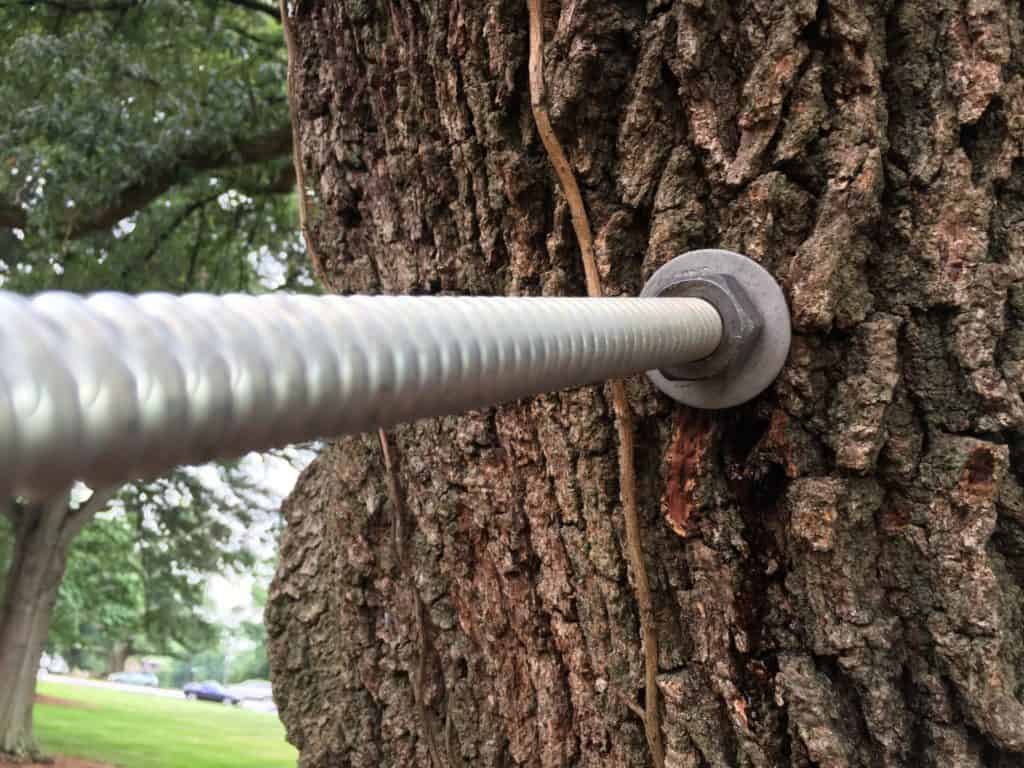
Cabling and Trimming Work Together
Tree cabling and tree trimming or pruning often go hand in hand to ensure the health and safety of a tree. While cabling provides internal support, trimming helps manage the tree’s external structure. Here’s how they work together:
- Weight reduction: Pruning excess or overextended branches reduces the weight load on the tree, making cabling more effective.
- Improved air circulation: Trimming enhances airflow through the canopy, reducing the risk of disease and allowing the tree to recover from cabling installations.
- Balanced growth: Regular trimming encourages balanced growth patterns, which can reduce the need for additional cabling.
- Hazard mitigation: Removing dead, diseased, or damaged branches minimizes potential hazards and complements the structural support provided by cabling.
Arborists often combine these practices to create a comprehensive care plan that addresses both the internal and external needs of the tree.
Why You Should Hire A Professional Arborist
Tree cabling is a specialized task that requires expertise, experience, and the right tools. Hire a professional arborist to have:
- Expert assessment: Arborists are trained to identify structural weaknesses and recommend the appropriate cabling solutions.
- Proper installation: Arborists ensure cables are installed properly for safety and security.
- Regular maintenance: Arborists provide ongoing inspections and maintenance to ensure the cabling system remains effective over time.
- Safety: Working with trees, especially large or damaged ones, can be dangerous. Professional arborists have the skills and equipment to perform the job safely.
- Comprehensive care: Arborists can integrate cabling with other tree care practices, such as trimming and disease management, to ensure overall tree health.
Tree cabling is a valuable technique for supporting and preserving trees with structural weaknesses. By understanding when cabling is necessary and how it works in conjunction with other tree care practices, you can make informed decisions about the health and safety of your trees. Remember, always consult with a professional arborist to ensure the best care for your trees!


